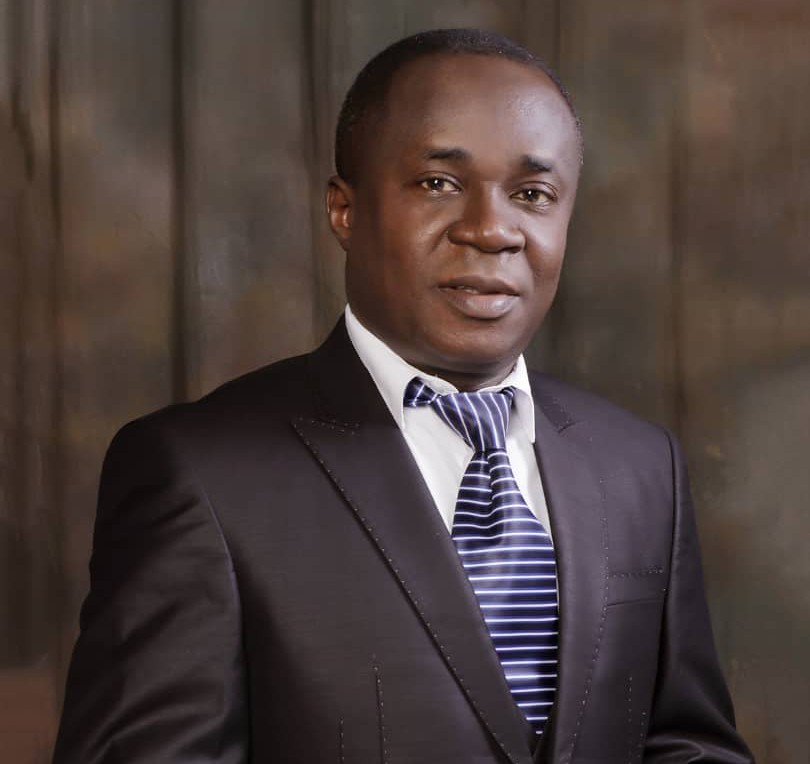Prof. Uwaleke Develops New Framework For Company Finance

In a seminal article titled: ‘Economic Cycle Hypothesis of Firm’s Capital Structure: Introducing a Framework for Corporate Finance in Developing Countries’, Uche Uwaleke, a renowned Professor of Finance and Capital Market at the Nasarawa State University Keffi develops a new conceptual framework for financing quoted companies against the backdrop of the current economic recession occasioned by COVID-19. Excerpts
Essentially, the Economic Cycle Hypothesis (ECH), canvassed in this article, posits that the way a company is financed is determined to a large extent by the economic cycle. It goes on to argue that even the combination of resources in aid of strategic decisions is influenced by the phases of this cycle. It is this ability to weave together capital structure and strategy that gives the ECH framework its utility.
Over its history, financing decisions of firms have understandably been guided by a plethora of theories on capital structure. The debate was, and still is, the optimal mix of debt and equity that maximizes the value of the firm reflected in part in its stock price. Whereas Modigliani and Miller (M&M) had argued in a seminal 1958 paper that capital structure was irrelevant in relation to firm’s value, several others such as Kraus and Litzenberger with their 1973 Trade-off theory, Myers and Majluf through their 1984 Pecking order theory and Baker and Wurgler credited with the 2002 Market Timing theory inveighed against the proposition. All knocked the M&M theory, in what has become the standard criticism, for riding on unrealistic assumptions.
This article is not intended to join issues with these eminent Lords of Finance. Rather, it strives to provide an analytical framework that adds horsepower to how company’s capital structure, its composition of debt and equity, is shaped by the economic cycle and how it is intertwined with strategy- the missing piece in the earlier intellectual paradigm on capital structure.
So, how might swings in economic activities, expansions and contractions, influence capital structure decisions of firms? How does this tie with their strategic actions? Earlier prescriptions have tended to overlook the fluidity in the macroeconomic environment of business firms. They also ignored how the attainment of strategic goals might depend on the way and manner a company goes about raising funds. This is the gap the ECH hypothesis seeks to narrow.
As the case of many developing countries including Nigeria and South Africa forewarn, (Nigeria only emerged from a recession in 2017 while South Africa was already in a technical recession prior to the outbreak of COVID-19) economic contractions will become more frequent going forward with implications for corporate finance. The ECH of capital structure espoused here is an attempt to tease out these implications through a practical framework for raising capital whether during periods of recession or boom.
The discussion is with a bias for companies quoted on a stock exchange (as unlisted private companies do not have the benefit of issuing securities to the public) and tailored to developing countries’ unique features which lead to a number of underlying assumptions namely that: a Recession is characterized by low investments, high unemployment rate, credit default risks making banks risk-shy.
Contrariwise, economic boom is associated with high industry capacity utilization and increase in productive activity. In most developing countries, the capital market is shallow and the debt market is dominated by the government sector. The stock market tends to move with the economic cycle: a bear market is associated with economic recession while the market tends to be bullish during economic boom.
The economy is characterized by huge fiscal deficit and so the government sector is in competition with the private sector for scarce funds driving up interest rates in the process. Tight monetary policy is more of the order and bank lending rate is high while credit to the private sector is low.
Economic recession, as the case of Nigeria has shown and quite contrary to developed countries’ experience, often exists side by side with high inflation and interest rates, stagflation in order words.
Armed with these factors predicated on the idiosyncratic features of developing economies, the ECH of capital structure is described in a 2 by 2 matrix.
 Fundamental to the ECH is the ECCS matrix which provides a nexus between capital structure, strategy and economic cycles hitherto not explored. In it, the 3 C’s of strategy namely Costs, Competition and Customers are strung around a company’s capital structure within the cycle of economic boom and recession with implications for dividend policy. The outcome is Strategic Capital Structure.
Fundamental to the ECH is the ECCS matrix which provides a nexus between capital structure, strategy and economic cycles hitherto not explored. In it, the 3 C’s of strategy namely Costs, Competition and Customers are strung around a company’s capital structure within the cycle of economic boom and recession with implications for dividend policy. The outcome is Strategic Capital Structure.
Inside the four-box matrix, Equity is placed on the upper left quadrant, Retained Earnings on the lower left, Debton the upper right while Asset Sale is on the lower right quadrant. The dynamics that govern their relationship is the Economic cycle displayed on the vertical axis while Time, how long the recession lasts, is shown on the horizontal dimension.
As fig 1 indicates, a temporary period of recession calls for the use of internal resources, retained earnings, as the prime source of finance. The company’s major concern here is stability. If severe or prolonged, often lasting more than eight consecutive quarters or 2 years meaning there is a depression, the company identifies and sells assets not critical to its operations. This might be by way of a Sale-and-Buy Back arrangement in case such assets would be needed in the future when the economy recovers and cash flows improve.
The resort to draw on resources saved during economic boom is primarily because of the downturn in economic activities and against the backdrop of assumptions made earlier: the stock market is bearish making the issuance of equity unattractive, the government is borrowing to fill fiscal gap, interest rates are high and so raises bankruptcy costs with debt issuance.
Following a boom, confidence in the economy gradually returns and investors’ sentiments turn positive. So, the company issues equity starting with a Rights Issue. For the company, this is better than the debt option because in the short term interest rates are sticky downwards. If the prosperity is sustained, the economy moves towards a low interest rate environment making debt issuance the preferred option for the pursuit of long term corporate goal of maximizing shareholder value.
Further, the framework speaks squarely to the role of economic cycles in strategic actions undertaken by companies. During periods of economic headwinds, the major consideration is how to remain stable and if turbulence is major and prolonged, how to even survive and ensure business continuity.
Faced with systematic risks, the company bothers less about the revenue side and becomes more concerned with how to be a low-cost producer relative to competitors by relentlessly cutting costs and riding down ‘the experience curve’.
Activity based costing is handy here. As an aside, a company might be quick to lay off staff following a recession but this would be a wrong move if the downturn in economic activity is expected to be temporary.
The reason is not farfetched: sacking workers during recession smacks of fair-weather relationship between employer and employee, leads to disloyalty on the part of those retained knowing full well that it could be their turn tomorrow.
Instead, salary cuts may be used beginning with a slash in Executive compensation. Layoffs can only be justified in a depression when the company is compelled to right size not least because the overriding goal is to survive.
When tailwinds arrive and the economy recovers and begins to boom eventually, the strategic goal changes to Growth. In this cell, the Boston Consulting Group’s Growth-Share matrix finds relevance. The company goes after market share via increased turnover which may not necessarily correlate with significant improvement in top and bottom lines. For this reason, residual dividend policy involving low payout ratio after prioritizing viable investment opportunities recommends itself.
Also, in view of the high interest rates that still persist in the short term, the company resorts to equity financing. Following strong economic growth, often above population growth rate and prolonged boom period characterized by liquidity surfeit and strong business confidence, interest rates decline and the company then looks to the Debt market for new financing.
Consequent upon increased leverage positively rubbing off on profitability, expansion is rapid including through undertaking projects with positive Net Present Value. With an eye on competitors, the company increases the dividend payout ratio taking advantage of its signalling effect.
Quite useful here will be the application of Michael Porter’s five forces competition framework. Increased discretionary cash flows that result, present a golden opportunity to build buffer against the rainy day. For the firm, the time is ripe to harvest value for shareholders. It is only at this stage that the pursuit of the goal of shareholder wealth maximization becomes more meaningful.
Of note is the valuable insight offered by theECH construct to how companies might approach dividend policy over the economic cycle adopting a nil payout ratio during periods of recession, a low or residual policy during short periods of economic boom and an active dividend policy for prolonged boom periods. But are these not the same postulations made by the Pecking Order and Market Timing theories? There are parallels, no doubt, to the extent that implicit in the ECH is also a pecking order that is time sensitive.
Nevertheless, while Myers and Majluf had argued for the use of debt before equity finance, the ECH, set in the context of developing countries, submit the reverse for reasons rooted in the peculiar interest rate milieu of these economies. Their contention that raising equity to finance investments might be perceived by the stock market as an attempt to ‘sell a lemon’, leading to adverse selection of some sort and raising the cost of equity relative to debt capital may not hold true in a high interest rate environment that diminishes the tax benefits of debt funding. This ECH stance of equity-first before debt is consistent with the Trade Off theory which argues that at high leverage levels, bankruptcy costs tend to outweigh the tax shield from debt.
On their own part, Baker and Wurglerof the Market Timing Hypothesis fame, allow thatFirms are indifferent between equity or debt financing as managers tend toissue equity whenovervalued and repurchase when undervalued thereby taking advantage of temporary mispricing in the market.
It is clear that these capital structure theories did not sufficiently deal with the overwhelming influence of economic cycles. What is more, they were also silent on how capital structure can be fused with strategic decisions. One message that stands out in the ECH analysis is that corporate finance objective is dynamic and in sync with the economic cycle.
The maximization of Shareholders’ wealth, contrary to a widely-held view, is not a goal suitable for all times and seasons. Because its pursuit is not a 100-meters dash, it becomes only realistic in the long run following the onset of favourable business conditions after a recession.
In highlighting other goals of the company through various phases of the economic cycle, the ECH does not seek to dethrone the yardstick of shareholder valueas the principal measure of corporate success. Rather, it questions the maximization of shareholders wealth as the be-all and end-all of corporate activity irrespective of economic conditions.
Expectedly, the first tar on the ECH of capital structure matrix from the brush ofacademics/scholars will be the question of the place of the recovery phase in the framework. The answer of course lies somewhere between the trajectory of recession and boom and the mix of capital will accordingly be influenced by whether or not the recovery is weak or strong.
With respect to new sources of finance, retained earnings is used if considered weak while a gradual shift to equity finance is justified if the recovery is considered strong. Granted that the cell boundaries may be blurred in real life, the allure of the ECH framework lies in the fact that this author has, in a simple graphic and conceptual devise, succeeded in stringing together the essential elements of strategic corporate finance.
.As the recent coronavirus pandemic brings home, a firm’s financing decisions, going forward, will necessarily become more adaptive if it must achieve strategic goals.
In summary, the ECH asserts that a company’s capital structure is a function of the economic cycle.
Retained earnings are used during aperiod of economic recession while non-critical assets are sold to generate funds if the downturn drags into a depression. Following a boom, the company opts more for equity finance while debt capital becomes the bride during a prolonged economic boom.
The ECH construct delivers more: it highlights implications for strategy and dividend policy leading to the submission that quoted companies require strategic capital structure to achieve strategic goals which are fluid and dependent on the economic cycle.
Admittedly, as a framework for corporate actions, the attempt to integrate capital structure with strategy in the context of business cycles is a pioneering one and still raw. Without a doubt, the ECH hypothesisput forward here enriches the body of literature in corporate finance and should act as a springboard for future research- one capable of bringing more rigor and empiricism- in the area of strategic capital structure.






